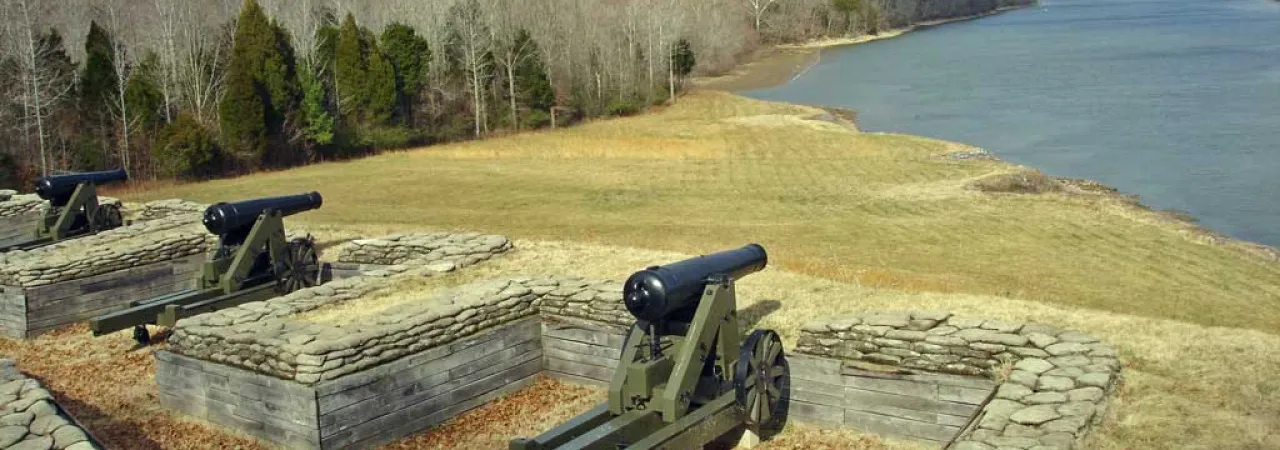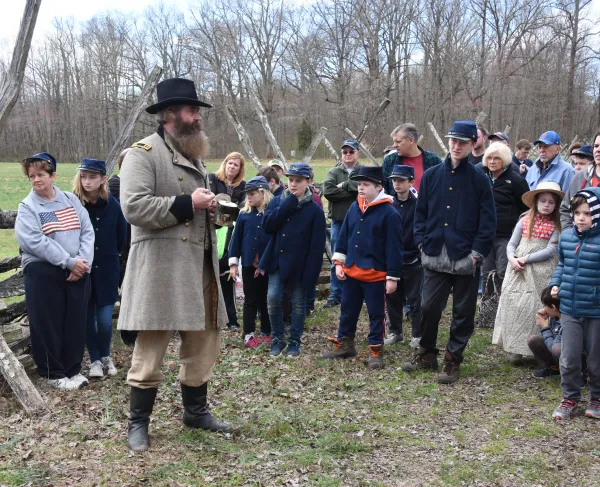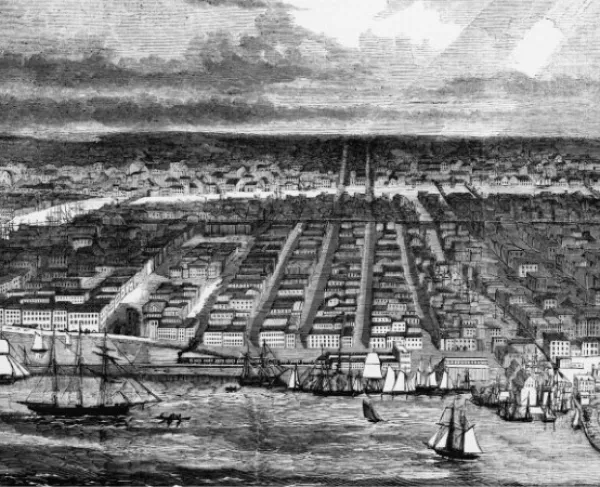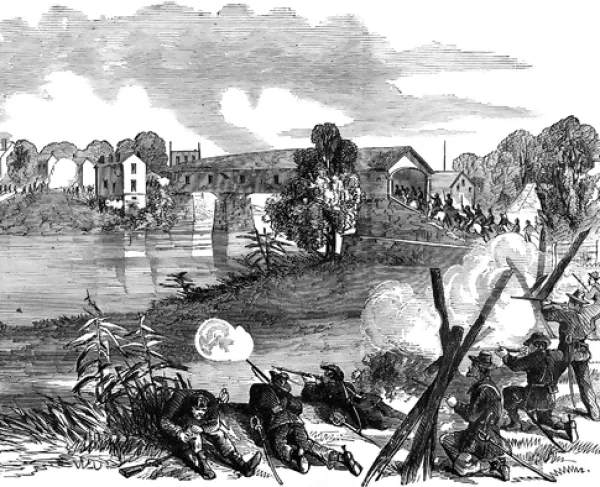
Artillery Control. A Columbiad installed at Fort Donelson with a clear shot over the Cumberland River.
At the Civil War’s outset, Kentucky’s declaration of neutrality forced Tennessee into the position of occupying the Confederacy’s western frontier. Unable at that early stage to advance north to the Ohio River, arguably the natural boundary between North and South, Confederate officials looking to fortify the nautical highways of the Cumberland and Tennessee Rivers were forced to look for suitable sites as close to the Kentucky–Tennessee boundary as possible. Thus, site selection for Forts Henry and Donelson was driven as much by political considerations as military strategy.
Construction on Fort Henry, built on the lower bank of the Tennessee River immediately south of the Kentucky line, began in early July and was finished in August. The site was less than desirable, dominated by hills on the Kentucky side of the river — one engineer rhetorically asked whether “a less favorable place” could have been chosen — causing the initial survey team to lodge an official objection to the choice. The five-sided, bastioned earthwork fortification mounted 17 heavy guns — including one 10-inch Columbiad capable of firing round shots weighing 128 pounds. Most guns were mounted on fully pivoting seacoast artillery carriages. Although they would ultimately prove ineffectual, a series of “torpedoes” were submerged in the main shipping channel. While the fort boasted two-mile unobstructed downriver views, it was situated within the swampy floodplain. Once both sides of the conflict had violated Kentucky’s neutrality in the autumn, a second defensive position was begun on the facing hilltops to augment the defenses, but no guns would ever be mounted at Fort Heiman.
Fort Donelson, meanwhile, was far more judiciously situated, occupying a 100-foot hill above the Cumberland River. Its guns were distributed among three levels: the two “water batteries” on the slope held 12-guns to command the river; the principle, or lower, battery held a 10-inch Columbiad and assorted 32-pounders; the upper battery counted a 64-pound rifled Columbiad and two 64-pound howitzers. The fort’s interior contained several small howitzers to deflect any attack from the land side. Eventually, three miles of infantry entrenchments ringed the fort and the town of Dover, with much of the length reinforced by abatis, or sharpened felled trees.
Help the Trust save 161 acres across consequential Western Theater battles — Fort Heiman and Fort Henry, Brown’s Ferry/Chattanooga, Spring Hill, and...
Related Battles
2,691
13,846
42
21





